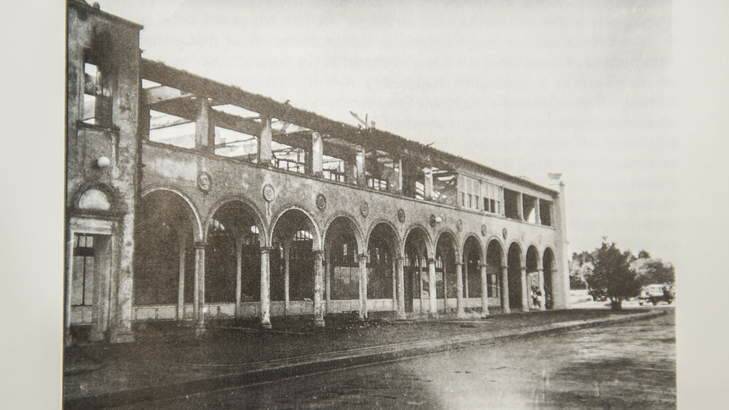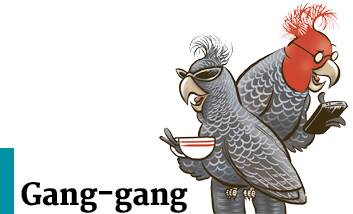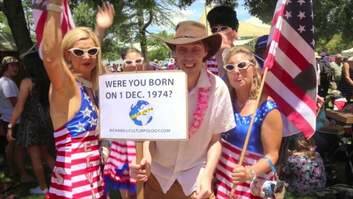The past is a foreign country, they do things differently there, and one of the things they do differently is the fighting of Canberra's fires.
Subscribe now for unlimited access.
or signup to continue reading
Monday's blaze at the historically priceless Sydney Building set us thinking about the terrible fire that gutted that building's twin, the Melbourne Building, on April 11, 1953.

That fire, we discover from the Canberra Times' dramatic reports, was fought by at least as many untrained volunteers (some of them in pyjamas and dressing gowns and one of them a professor of political science!) as by the precious few firemen in a city that sounded breathtakingly unprepared for firefighting. The 1953 blaze was the city's first big fire and, quite a wake-up call, was probably the last big fire which Canberrans in pyjamas were allowed to help fight.
Here is a precis of the Times' front-page story of April 13, 1953.

''More than one half of the western side of the Melbourne Building at Civic Centre is a gutted ruin after the most disastrous and costly fire in the history of Canberra, early on Saturday morning. About 5am Mr Cowie, a watchman in the Census Office, opposite the Melbourne Buildings, noticed a glow in the windows on the top floor of the University College. He immediately ran to the police station and [constables] telephoned Canberra Fire Brigade at 5.10am. Only four firemen answered the first alarm, as others were on leave. Acting Chief Officer Holden immediately cancelled all leave and issued an emergency call which resulted in two more firemen attending.
''The six firemen were soon augmented by police and civilian volunteers, including many milk-men on their morning rounds. Every available hose and hydrant in the vicinity was taken into service. Residents of the neighbourhood turned out in pyjamas and dressing gowns to man the powerful hoses and turn streams of water through the windows of the building which, by this time, was a raging inferno.
''Firemen praised the courage of volunteers who joined in entering the buildings in the face of the danger of crashing beams, dense smoke and falling red-hot tiles and masonry in an attempt to reach the seat of the blaze.
''Mr Holden, accompanied by a milkman and a police constable, fought his way down one narrow flame-filled passage to turn a hose on a blazing area.

''As news of the fire spread hundreds of people turned out to watch from lawns opposite. Many were pressed into service to assist in shifting and manning hoses. The Chief Geologist of the Bureau of Mineral Resources Dr N.H. Fisher, had to be restrained when he tried to rush into his office to save same of his more valuable records.
''Professor of Political Science L.F. Crisp entered his office in the University College by climbing a ladder to rescue some papers. As he was leaving he was soaked when caught in a stream of water from a hose. However, he later joined firemen in manning another hose.
''Police blocked West Row to all traffic and kept the crowd grouped on the lawn outside the Canberra Club. They had to chase back several youngsters who tried to run across the road to grab pieces of tile as souvenirs. At dawn the building presented a stark and grim sight to the onlookers, with thick white smoke rising from the black and crumpled ruin.''
Englishman's global quest for time twins
Canberra teems with about 370,000 people but there are only about 12 who are of special interest to visiting - and rather eccentric - Englishman Richard Avis.
The Londoner is beetling to and fro across the world in search of his ''time twins'', people who share his birthday of December 1, 1974. He calculates that about one person in 25,000 has this birthday so that a flock the size of Canberra's should boast about a dozen of these folk. He arrives in Canberra on Wednesday.
Using the miracle of the internet and the assistance of obliging local media, he's identified about 270 ''twins'' in 70 countries.
He hopes to meet them all eventually - even the ones in Greenland and Ethiopia - and has so far been to 13 countries. Australia is his most recent.
Avis says that he's a mid-life 39 and living in London and, having had much the same job and way of life for 14 years, found himself at that stage when so many of us begin to agonise about the meaning of our lives.
He decided to wriggle out of this rut and to go and talk to the people of the world who had lived exactly the same number of days as himself.
''I wanted to experience how people of this slice of my generation have lived their lives after being born in very different places,''Avis said.
''In my case, the proverbial stork [the bird that delivers babies to homes] put me down in Dumfries [in Scotland] but how would all our lives have been different if we'd been born somewhere else? Or, how similar might they have been?''
A book and probably a documentary film will emerge from all of this eccentric questing.
Canberrans born on December 1, 1974 are part of his generational ''slice'' and he would love to meet you.
His phone number is 0474 702 978 and his email address is richard@culturpology.com.

